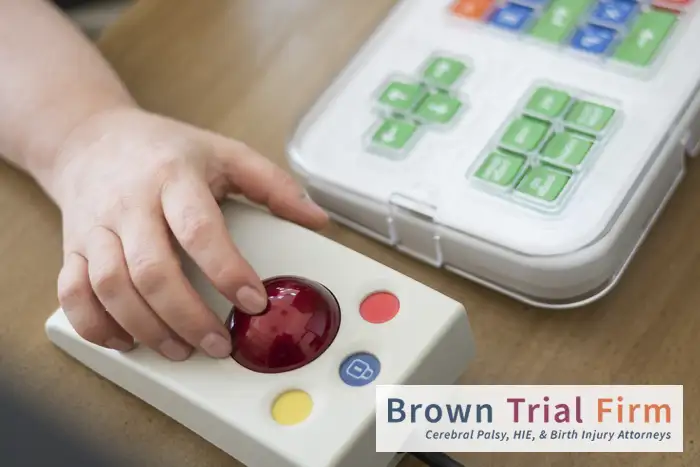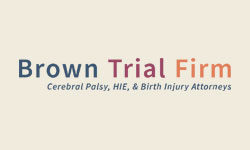With its rich history and vibrant communities, Delaware offers a unique blend of experiences like outdoor activities, cultural events and educational opportunities for families to enjoy. Despite the many perks, Delaware is not immune to the challenges and complexities of childbirth, including the risk of birth injuries.
These injuries can leave families facing unexpected emotional, physical and financial burdens, challenging the dreams they hold for their newborn’s future. If you believe your child is suffering from a birth injury caused by a medical mistake, it’s crucial to seek professional legal advice as soon as possible.
At Brown Trial Firm, experienced Delaware birth injury attorney Laura Brown is here to help you understand your legal rights and options, ensuring you have the guidance needed to pursue the best possible outcome for your child and family.
Get started today by contacting her office to schedule your free consultation.
Statistics on infant preterm births and fatalities in Delaware
In 2023, the March of Dimes gave Delaware a “D” grade for preterm births due to a preterm birth rate of 10.8%, which was slightly below the national average that year of 10.4%. The worst Delaware county was New Castle County, with a preterm birth rate of 11.7%.
Why does this matter?
Low birth rates are associated with a higher risk of birth injuries and other negative health outcomes for infants, including death. In fact, the March of Dimes reported that the leading cause of infant deaths in Delaware from 2019 to 2021 was preterm birth and low birth weight.
Infant wrongful death: Seeking justice after a tragic loss
Losing a precious baby is heart-wrenching, especially when negligence is involved. Discover the legal options and support available for grieving families.
What is considered a birth injury?
A birth injury refers to any harm or damage that occurs to a baby during pregnancy, labor or delivery. These injuries can happen before, during or immediately after birth, affecting the infant’s health in various ways.
Birth injuries can range from mild, requiring minimal treatment, to severe, leading to long-term health issues or disabilities.
Some of the most common birth injuries include the following:
- Brachial plexus injuries. These injuries involve damage to the brachial plexus, the network of nerves that sends signals from the spine to the shoulder, arm and hand. The most common type is Erb’s palsy, which can cause weakness or paralysis of the arm.
- Broken bones. Clavicle (collarbone) fractures are the most common bone fractures during birth, typically occurring during difficult deliveries or breech (feet first) births.
- Cerebral palsy. This is a group of permanent movement disorders that appear in early childhood. It can be caused by low oxygen levels or blood flow before, during or shortly after birth that leads to brain damage.
- Intracranial hemorrhage. This is bleeding under the skull or within the brain, which can occur as a result of birth trauma, especially in premature births.
- Caput succedaneum. This refers to swelling of the soft tissues of the baby’s scalp. It develops as the baby travels through the birth canal and is typically seen after delivery.
- Hypoxic-ischemic encephalopathy (HIE). This is a condition characterized by brain injury due to insufficient oxygen and blood flow to the infant’s brain near the time of birth. This can result in significant, enduring consequences, such as cerebral palsy and cognitive deficits.
- Cephalohematoma. This is a buildup of blood between a baby’s skull and the membrane that covers the skull, often seen several hours after birth. It is usually caused by trauma during delivery.
- Facial nerve injuries. Facial nerve damage, such as Bell’s palsy, might result from undue pressure on the baby’s face during birth or the utilization of forceps. This condition can lead to facial paralysis.
- Kernicterus. This is a critical form of neonatal jaundice, leading to lasting brain damage. Excessively elevated bilirubin levels in the newborn’s bloodstream can cause irreversible neurological damage, including hearing loss, cognitive disabilities and motor skill issues.
The specific circumstances of the birth, including the baby’s size, the position during delivery, and the duration of labor, as well as the use of birth-assisting tools like forceps or vacuum extractors, can influence the risk and type of birth injury.
If the injury was a direct result of a health care professional’s mistake, including their actions or failure to act, your child may be entitled to compensation through a birth injury lawsuit.
What is the most common site of birth injury?
The most common site of birth injury involves the head or brain. During childbirth, especially in difficult or prolonged deliveries, the baby’s head may be subjected to pressure, leading to various types of injuries and brain damage.
These can range from minor injuries that heal and have no long-term repercussions, such as bruises and swelling, to more severe conditions, such as brain injuries.
More severe brain injuries often occur due to oxygen deprivation (hypoxic-ischemic encephalopathy) or trauma (intracranial hemorrhage). These conditions can have lasting impacts on a child’s neurological development and may result in conditions such as cerebral palsy.
The head and brain are particularly vulnerable during birth due to the physical pressures and changes associated with delivery.
While many minor injuries resolve without treatment, severe injuries may require medical intervention and ongoing care to address potential developmental issues or disabilities.
Securing the compensation you deserve starts with the RIGHT birth injury lawyer by your side.
Laura Brown has recovered millions for her clients affected by birth injuries. Here’s just one example:
$10.3
Million
HIE malpractice lawsuit
The child’s HIE and cerebral were caused by hypoxia and ischemia when the umbilical cord wrapped around the child’s neck, preventing the child from getting enough oxygen.
The medical providers did not identify the warning signs and did not order a timely C-section. The delay caused severe and permanent injuries.
What are the long-term effects of birth injury?
The long-term effects of birth injuries can vary widely, depending on the severity and nature of the injury. These effects can range from mild, temporary issues to severe, lifelong disabilities. Understanding the potential long-term outcomes is crucial for early intervention and support.
Below are some of the long-term effects associated with common birth injuries:
- Motor skill impairments. Injuries such as brachial plexus injuries can lead to lasting difficulties with movement and coordination in the affected limbs. For example, Erb’s palsy may result in weakened arm muscles or reduced range of motion.
- Cognitive and developmental delays. Severe brain injuries, like hypoxic-ischemic encephalopathy (HIE), can lead to cognitive impairments and developmental delays. Children may experience challenges with learning, memory and problem-solving skills.
- Sensory impairments. Kernicterus, a severe form of jaundice, can cause hearing loss. Other sensory impairments may also occur, depending on the area of the brain affected by the injury.
- Epilepsy. Brain injuries sustained during birth can increase the risk of developing epilepsy, a condition characterized by recurrent seizures.
- Speech and language delays. Birth injuries, like cerebral palsy, affecting the brain can lead to difficulties with speech and language development. Children may struggle with understanding language, speaking, reading and writing.
- Emotional and behavioral challenges. Children who have experienced birth injuries may face emotional and behavioral challenges, including social interaction difficulties, attention deficit hyperactivity disorder (ADHD) and anxiety.
- Physical disabilities. Severe injuries can result in physical disabilities that require lifelong care and assistance. This may include the need for mobility aids, surgeries, physical therapy and other medical interventions.
Early diagnosis and intervention are often key to managing the long-term effects of birth injuries. With appropriate medical care, therapy and support, many children can overcome or significantly manage the challenges associated with their injuries, leading to improved outcomes and quality of life.
Best adaptive equipment & technology for kids with cerebral palsy
Learn how adaptive equipment and assistive technology can improve the lives of kids with cerebral palsy and other birth injuries.
What is the statute of limitations on birth injury in Delaware?
In Delaware, the statute of limitations for filing a birth injury lawsuit is generally 2 years from the date of the injury. However, for birth injury claims involving minors, Delaware law provides an exception that allows for an extended period. Specifically, for medical negligence cases involving children, the statute of limitations may not expire until the child reaches the age of 6.
This extended period acknowledges that some birth injuries or their effects may not become apparent immediately after birth or may take years to fully manifest. It gives parents and guardians ample time to discover the full extent of the injury and its impact on the child’s life before deciding to take legal action.
However, navigating the specifics of medical malpractice and birth injury laws can be complex, and there may be nuances or exceptions based on the individual circumstances of the case, so it’s crucial to discuss the specifics of your case with an experienced birth injury attorney to ensure that you’re taking the appropriate steps within the legal time frames.
Get help from an experienced Delaware birth injury attorney
At Brown Trial Firm, you’ll find a legal advocate with a proven track record in birth injury law. Laura Brown’s reputation for navigating the complexities of birth injury cases stretches far beyond state lines, highlighting a career filled with significant victories for affected families. Her approach, which combines deep legal knowledge with genuine compassion, ensures that each case is handled with the sensitivity and dedication it deserves.
Choosing Laura Brown means partnering with an expert who brings unparalleled expertise, access to leading medical consultants and a relentless pursuit of justice for your family. With Laura Brown and her team, you’re not just getting legal representation; you’re securing a powerful ally committed to fighting for the best possible outcome for your child.
Contact her office today to schedule a free, no-obligation consultation.
Delaware attorney dealing with a complex birth injury case?
Laura Brown is distinguished by her exceptional expertise in birth injury litigation, boasting a record of significant victories within the state and nationally. She understands the profound complexities associated with birth injury cases, offering specialized legal representation that is both compassionate and customized to meet the unique needs of each family.
Choosing to work with Laura Brown means more than securing a legal expert; it signifies forming a partnership with a dedicated advocate for birth injury victims, equipped with a network of top medical experts and a firm commitment to securing justice for your clients.
Elevate the level of representation for your clients and enhance their prospects for a favorable outcome by partnering with Laura Brown.




